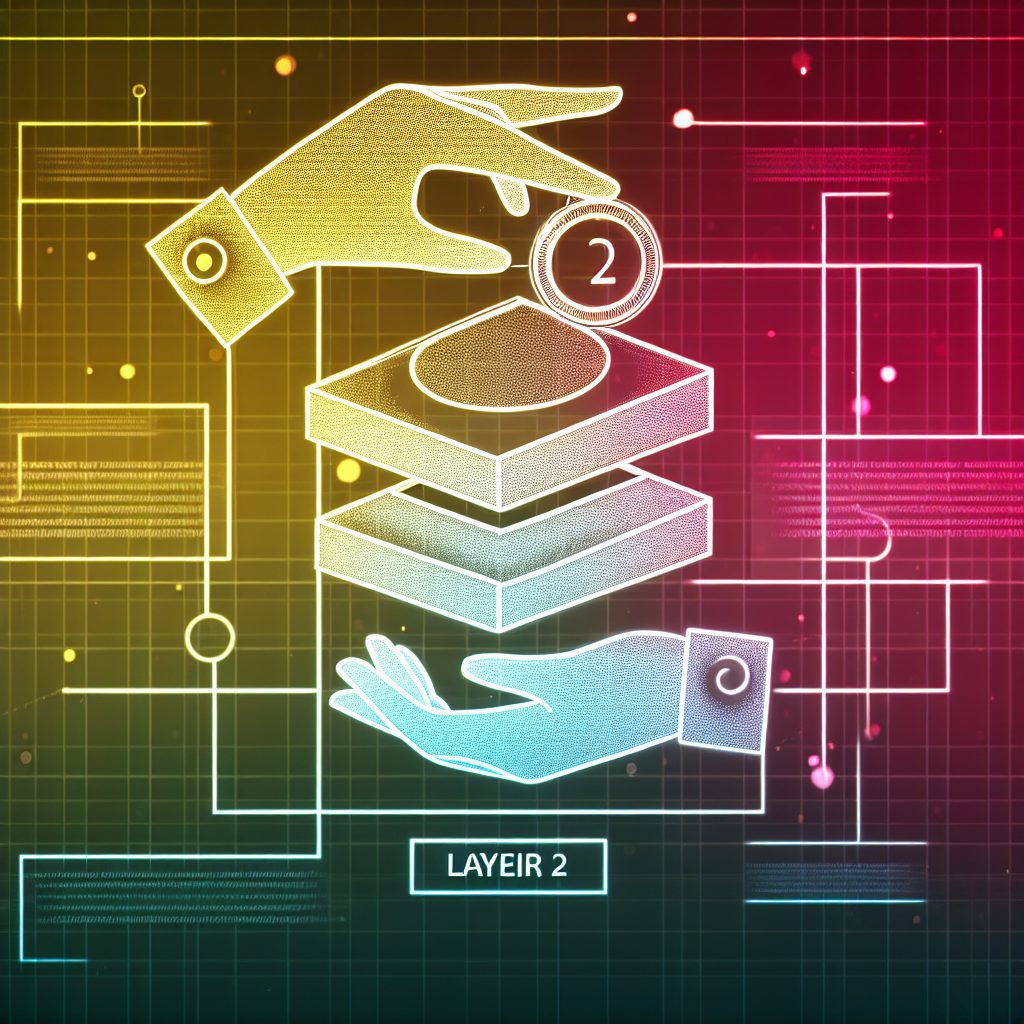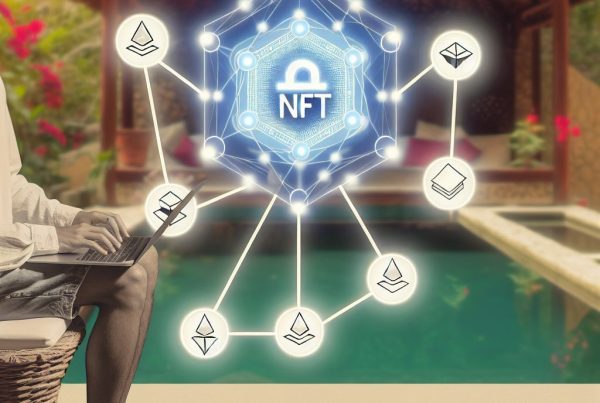What Is a Layer 2 Rollup?
The cryptocurrency landscape is constantly evolving, with new technologies emerging to address the challenges faced by blockchain networks. One such innovation is the concept of Layer 2 Rollups. These solutions are designed to enhance the scalability and efficiency of blockchain networks, particularly those that are experiencing congestion and high transaction fees. In this article, we will delve into the intricacies of Layer 2 Rollups, their benefits, types, and real-world applications, providing a comprehensive understanding of this pivotal technology in the crypto industry.
Understanding Layer 2 Solutions
Before we dive into Layer 2 Rollups, it’s essential to grasp the broader category of Layer 2 solutions. These are secondary frameworks built on top of existing blockchain networks (Layer 1) to improve their performance. The primary goal of Layer 2 solutions is to alleviate the burden on the main blockchain by processing transactions off-chain while still leveraging the security and decentralization of the underlying Layer 1 network.
Layer 2 solutions can be categorized into several types, including:
- State Channels: Allow participants to conduct transactions off-chain and only settle the final state on the blockchain.
- Plasma: A framework that enables the creation of child chains that can process transactions independently.
- Rollups: Bundle multiple transactions into a single one, reducing the load on the main chain.
What Are Rollups?
Rollups are a specific type of Layer 2 solution that aggregates multiple transactions into a single batch, which is then submitted to the Layer 1 blockchain. This process significantly reduces the amount of data that needs to be processed on-chain, leading to lower fees and faster transaction times.
There are two main types of Rollups:
- Optimistic Rollups: Assume that transactions are valid by default and only check for fraud when a challenge is raised.
- ZK-Rollups: Use zero-knowledge proofs to validate transactions off-chain, ensuring that only valid transactions are included in the batch.
How Do Layer 2 Rollups Work?
Layer 2 Rollups operate by bundling multiple transactions into a single proof, which is then submitted to the Layer 1 blockchain. This process involves several key steps:

- Transaction Aggregation: Users submit their transactions to the Rollup operator, who aggregates them into a single batch.
- Proof Generation: The Rollup generates a cryptographic proof (in the case of ZK-Rollups) or prepares the batch for submission (in Optimistic Rollups).
- On-chain Submission: The aggregated proof or batch is submitted to the Layer 1 blockchain, where it is verified and recorded.
This method allows Rollups to significantly reduce the amount of data that needs to be processed on-chain, leading to enhanced scalability and lower transaction costs.
Benefits of Layer 2 Rollups
Layer 2 Rollups offer several advantages that make them an attractive solution for blockchain scalability:
- Increased Scalability: By processing transactions off-chain, Rollups can handle a much larger volume of transactions compared to Layer 1 solutions.
- Lower Transaction Fees: With fewer transactions being processed on-chain, users benefit from reduced fees, making blockchain usage more accessible.
- Faster Transaction Times: Rollups can significantly speed up transaction confirmation times, enhancing the user experience.
- Security: Rollups inherit the security features of the underlying Layer 1 blockchain, ensuring that transactions remain secure and decentralized.
Real-World Applications of Layer 2 Rollups
Layer 2 Rollups have already begun to make a significant impact in various sectors of the cryptocurrency industry. Here are some notable examples:
1. Ethereum and Optimistic Rollups
Ethereum, one of the most widely used blockchain platforms, has implemented Optimistic Rollups to enhance its scalability. Projects like Optimism and Arbitrum utilize this technology to allow users to conduct transactions with lower fees and faster confirmation times. These Rollups have seen substantial adoption, with millions of dollars in transactions processed off-chain.
2. ZK-Rollups in Decentralized Finance (DeFi)
Decentralized finance platforms are increasingly adopting ZK-Rollups to improve their transaction throughput. For instance, zkSync is a Layer 2 scaling solution that leverages ZK-Rollups to enable fast and cost-effective transactions for DeFi applications. This technology allows users to trade, lend, and borrow assets with minimal fees while maintaining the security of the Ethereum network.
3. Gaming and Non-Fungible Tokens (NFTs)
The gaming industry and NFT marketplaces are also benefiting from Layer 2 Rollups. Platforms like Immutable X utilize ZK-Rollups to facilitate instant trading of NFTs without gas fees, making it easier for users to buy, sell, and trade digital assets. This has led to increased user engagement and a more vibrant marketplace for NFTs.
Challenges and Limitations of Layer 2 Rollups
While Layer 2 Rollups offer numerous benefits, they are not without challenges:
- Complexity: The implementation of Rollups can be complex, requiring developers to have a deep understanding of both Layer 1 and Layer 2 technologies.
- Withdrawal Delays: In some cases, users may experience delays when withdrawing funds from Rollups back to the Layer 1 blockchain, particularly with Optimistic Rollups.
- Security Concerns: While Rollups inherit security from Layer 1, they still face potential vulnerabilities, especially in the case of Optimistic Rollups where fraud proofs are necessary.
Future of Layer 2 Rollups
The future of Layer 2 Rollups looks promising as more projects and developers recognize their potential to solve scalability issues. As blockchain technology continues to evolve, we can expect to see:
- Increased Adoption: More platforms will likely adopt Rollups to enhance their scalability and user experience.
- Interoperability: Future developments may focus on improving interoperability between different Layer 2 solutions and Layer 1 blockchains.
- Enhanced Security Features: Ongoing research and development will likely lead to improved security measures for Rollups, addressing current vulnerabilities.
FAQs About Layer 2 Rollups
What is the difference between Optimistic Rollups and ZK-Rollups?
Optimistic Rollups assume that transactions are valid by default and only check for fraud when a challenge is raised, while ZK-Rollups use zero-knowledge proofs to validate transactions off-chain, ensuring that only valid transactions are included in the batch.
Are Layer 2 Rollups secure?
Yes, Layer 2 Rollups inherit the security features of the underlying Layer 1 blockchain. However, they may face specific vulnerabilities, particularly in the case of Optimistic Rollups where fraud proofs are necessary.
Can I use Layer 2 Rollups for any cryptocurrency transaction?
Layer 2 Rollups are primarily designed for specific blockchain networks, such as Ethereum. Users can utilize Rollups for transactions on platforms that support them, but they may not be universally applicable across all cryptocurrencies.
How do I access Layer 2 Rollups?
To access Layer 2 Rollups, users typically need to use wallets or platforms that support these solutions. For example, users can interact with Optimism or zkSync through compatible wallets and decentralized applications (dApps).
Conclusion
Layer 2 Rollups represent a significant advancement in the quest for blockchain scalability and efficiency. By processing transactions off-chain and leveraging the security of Layer 1 networks, Rollups provide a viable solution to the challenges faced by congested blockchains. As the cryptocurrency industry continues to grow, the adoption of Layer 2 Rollups is likely to increase, paving the way for a more scalable and user-friendly blockchain ecosystem.
For the latest updates on cryptocurrency news and price tracking, consider visiting Bitrabo. Stay connected with me on social media: follow me on X, Instagram, and Threads.
Disclaimer: This article is for informational purposes only and should not be considered financial advice. Always conduct your own research before making investment decisions.
The Crypto Watchlist of the Week 🔎
Subscribe to receive expert-curated projects with real potential—plus trends, risks, and insights that matter. Get handpicked crypto projects, deep analysis & market updates delivered to you.


